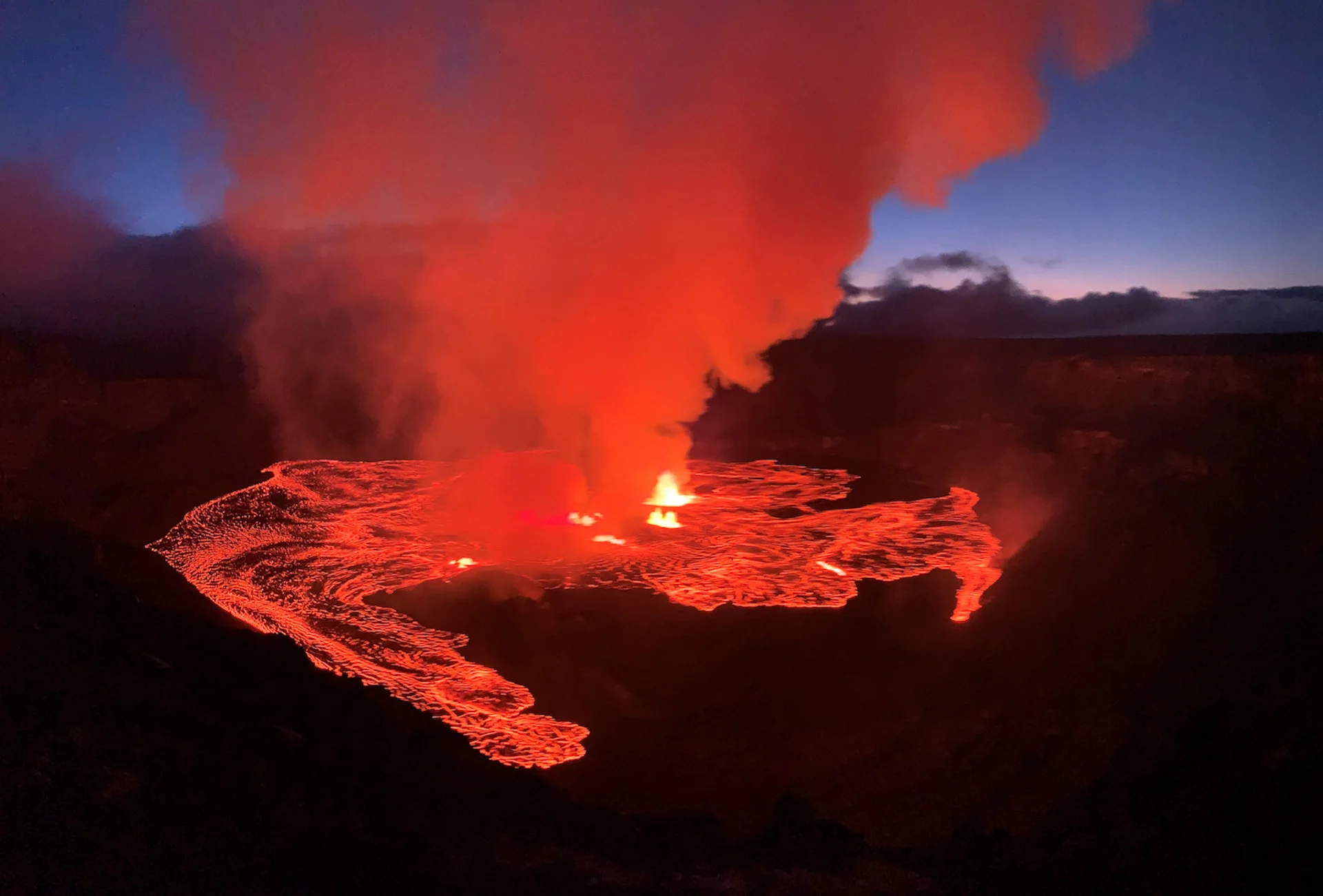
Hawaii's Kilauea volcano erupts for the third time this year
The Hawaii Emergency Management Agency wrote on X, the social media platform formerly known as Twitter, that the eruption "does not pose a lava threat to communities" though volcanic particles and gases may create breathing problems for people exposed.
WASHINGTON (Reuters) - The Kilauea volcano on Hawaii's Big Island began to erupt on Sunday afternoon, with flows currently confined to the surrounding crater floor, the U.S. Geological Survey (USGS) said on Sunday.
Webcam images show fissures at the base of the volcano's crater that are generating lava flows on the surface of the crater floor.
The Hawaii Emergency Management Agency wrote on X, the social media platform formerly known as Twitter, that the eruption "does not pose a lava threat to communities" though volcanic particles and gases may create breathing problems for people exposed.
SEE ALSO: Volcanoes in Canada could one day be used to generate renewable energy

File photo from Dec. 21, 2020. (USGS/via Reuters)
The eruption was preceded by a period of strong seismicity and "rapid uplift" of the summit, according to USGS.The agency elevated Kilauea's aviation color code from orange to red as it evaluates the eruption and its volcano alert from watch to warning.
Located in a closed area of Hawaii Volcanoes National Park, Kilauea is one of the world's most active volcanoes. In 2019, a string of earthquakes and major eruption at Kilauea led to the destructions of hundreds of homes and businesses.
The volcano erupted in January and June of this year.
Thumbnail image taken on June 7, 2023. Courtesy of USGS/Handout via REUTERS/File Photo.
(Reporting by Valerie Volcovici and Costas Pitas; Editing by Michael Perry)